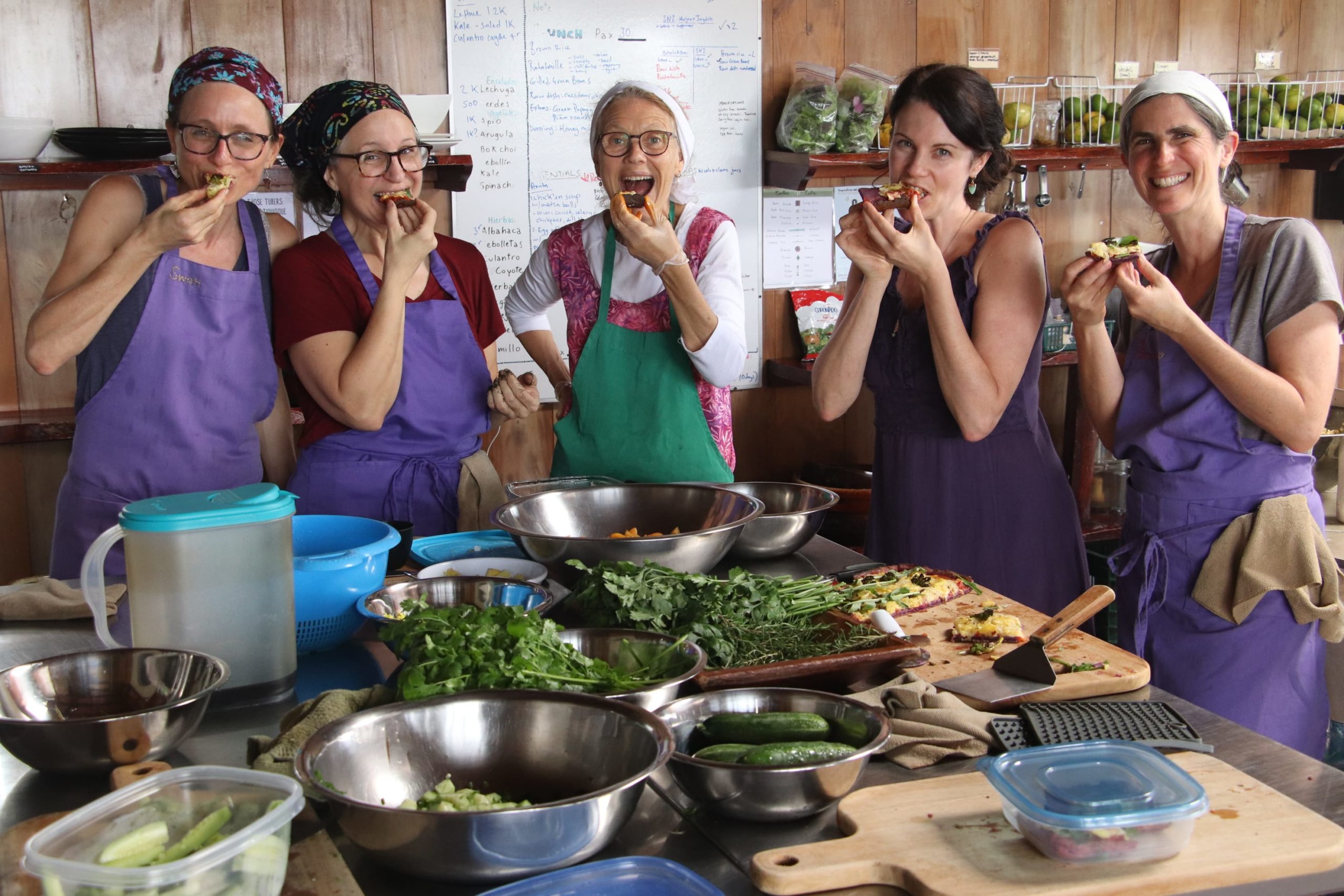
Who doesn’t LOVE pizza, especially when it is made with LOVE… and freshly harvested produce, a gluten-free root-based crust, and homemade cheese locally sourced from neighbors?
As the ashram endeavors evermore toward a sustainable diet, we are increasingly inspired to create and share recipes that showcase the verdant abundance of Arunachala, our mountain-top abode, as well as nature’s bounty from surrounding farms and local vegetable markets. There is deep gratitude that comes from witnessing the
whole process of growth, from seed to fruit, and then morphing those raw ingredients into a meal that nourishes the body and celebrates the miracle and cycle of life…especially when that meal is a pizza!
Being a predominantly gluten-free kitchen focused on healthy, homegrown and plant- based food, our ashram kitchen, lovingly known as Ruchira (which means delicious, sattvic, bright, and beautiful), had only served pizza a handful of times over the last few years, as a special treat for celebrations. That was until Radha Ma, using her resourceful and creative prowess, turned some leftover boiled taro (also called malanga, a robust root that grows here in abundance) into a root-based pizza crust, using only two other ingredients–cassava flour and salt. Not only did the taro root make an incredibly crispy pizza crust, it also added a noticeable depth of flavor that stood up to a standard wheat flour pizza crust. Inspired by this new approach that was in alignment with our gluten-free diet (and our love for pizza), the experimenting began with roots of all shapes, colors and textures!
Making pizza crusts from our plethora of roots is a creative solution for utilizing the what we have been gifted from our land without relying on imported wheat flours and we have yet to try a root that doesn’t make an excellent crust. Taro root (also known as malanga & ñampí) cassava root (also known as yucca) and sweet potato (also known as camote) have all been successful. This year, we have been growing 3 different colors of sweet potato–purple, orange, and white (for this recipe, purple sweet potato won first place due to its spectacular vibrancy!). Each root has a unique flavor and texture and teamed up with farm-fresh toppings such as broccoli, red peppers, zucchini–or whatever you have on hand – plus a drizzle of pesto (see our recipe below) and a sprinkle of arugula and you have healthy culinary delight that tastes like it is straight out of a gourmet pizza joint!
In-joy!
Namaste,
Tara
Ruchira Supervisor
PS- Our ashram “prema”-culture team (prema means divine love!) has been creating joyful, beautiful, and information-filled harvest reports for many years, documenting our growth, challenges, and bountiful successes. And we now have the great joy of sharing them with our global community through our website blog page.
Please visit and share in the Infinite Beauty: Ashram Life Blog
Harvest Pizza
with a Gluten-Free, Root-Based Crust
~A Ruchira Recipe~
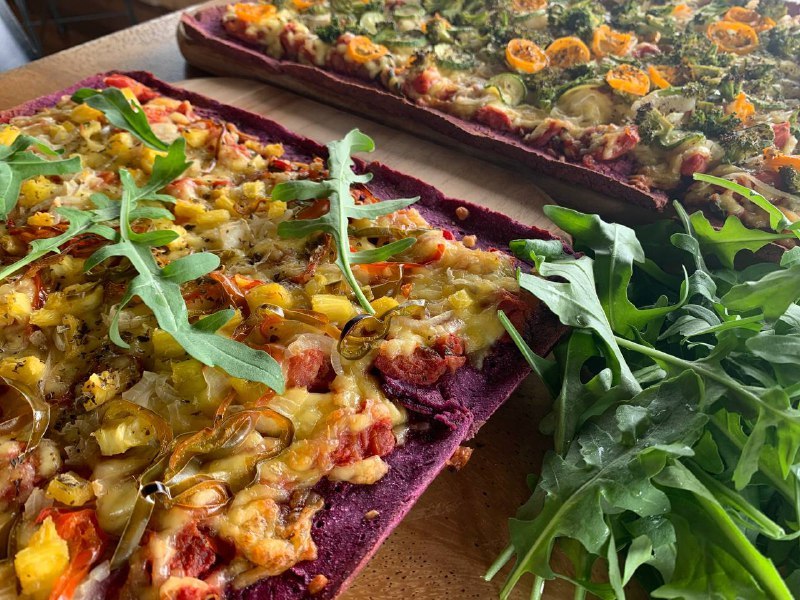
Recipe for 1 large pizza / 20 slices
Serves 4 – 5 people
INGREDIENTS
Root-Based Crust Ingredients:
- 18.5 in x 12.5 in baking sheet
- 2 ½ pounds sweet potato (or other root of choice), boiled in salty water
- 1/2 pound cassava/yucca flour. You may use more or less depending on the water content of root. You are looking for the texture of Play-doh.
- 2 teaspoons salt, or to taste
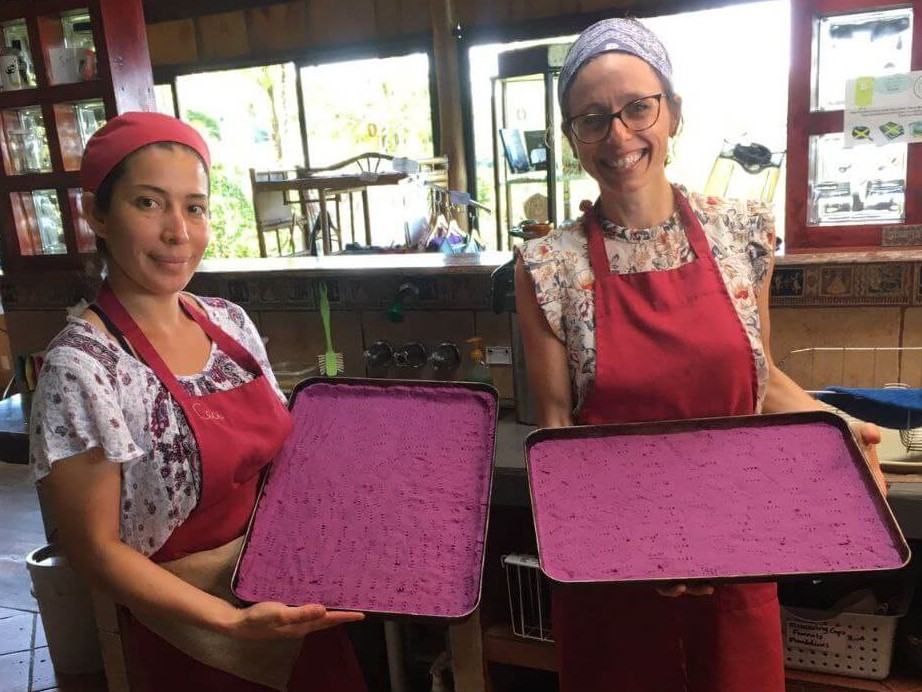
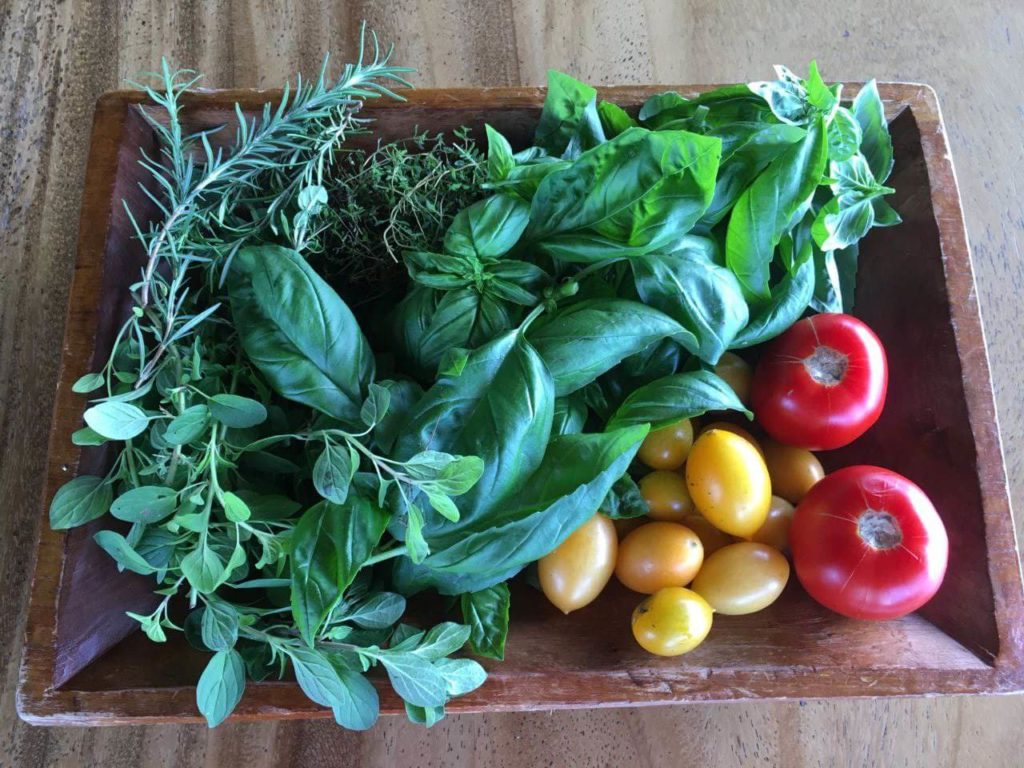
Pizza Sauce Ingredients:
- 2 heaping cups of pre-cooked fresh tomatoes (approximately 3.5 pounds or 12 medium tomatoes, cored and peeled). If you are using cans, start with 1 28-oz can of crushed or diced tomatoes.
- 2 cloves garlic, minced or to taste
- 1 ½ tsp dried oregano, or to taste
- 6 large basil leaves, finely chopped (we use fresh from our garden!)
- 1/2 tsp salt, or to taste
Pizza Topping Ingredients:
- 3/4pound grated cheese*
- 2-3 cups of lightly cooked veggies or fruit per pizza
∼ For pineapple, onion and red pepper pizza with fresh arugula
• 1 cup cooked red or white onions, (approximately 1 large onion in slim half moons)
• 1 cup cooked red peppers, (approximately 2 red peppers, slim half moons)
• 1 cup pineapple, drained (approximately 1/2 medium pineapple, diced small). In order to avoid extra moisture on the pizza, we drain our pineapple until the moment it goes on the pizza.
• A handful of arugula to sprinkle on top when the pie comes out of the oven
∼ For veggie pizza
• 1 cup cooked red or white onions, (1 large onion in slim half moons)
• 2 cups cooked veg, for example broccoli (small florets, no stem) or zucchini (thinly sliced)
*We use a fresh local cheese called Turrialba in Costa Rica. This is a semi-soft, unaged cheese that is salty and melts well, similar to Mexican queso fresco. But of course, you can use typical mozzarella cheese, or a vegan cheese equivalent, or exchange the cheese for a vegan pesto (see recipe below).
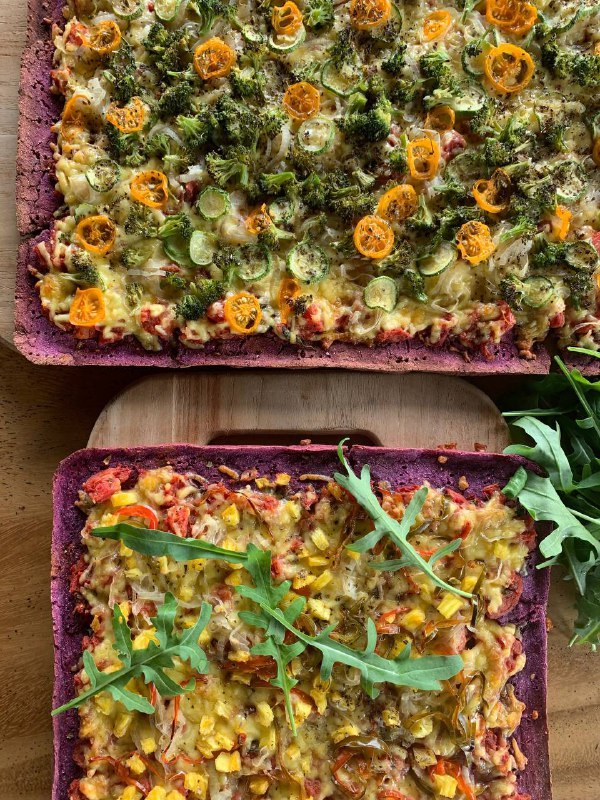
VEGAN BASIL PESTO
Yields approx: 2/3 cup
This recipe is for a small quantity (2/3 cup) which can make it difficult to blend in a standard food processor as it will result in a chunky pesto. If you want a very smooth pesto, we recommend making extra (triple the recipe), and freezing some for another day. Otherwise, you can use a small, bullet-style blender instead.
- 1 tablespoon garlic, lightly cooked (we don’t use raw garlic, a common practice in ashrams, but you could, depending on your love for garlic)
- 16 large basil leaves / 2 cups loosely packed, washed
- 1/4 cup sunflower seeds
- 1/8 cup lime juice
- 3/4 teaspoon salt
- 1/4 cup oil, such as extra light tasting olive oil, or avocado oil (something that does not have a strong flavor)
- 2 tablespoons nutritional yeast (optional)
Blend together and enjoy!
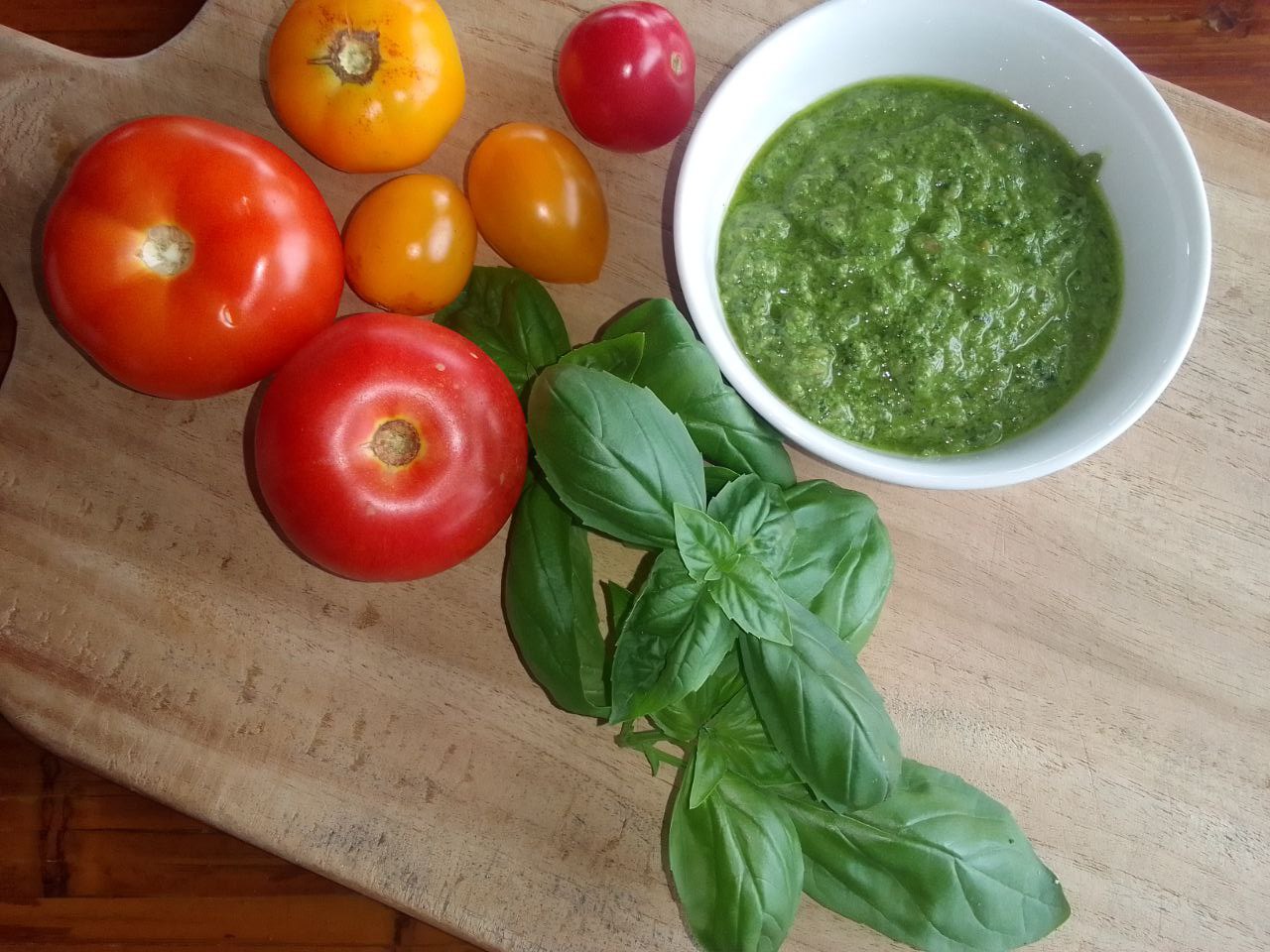
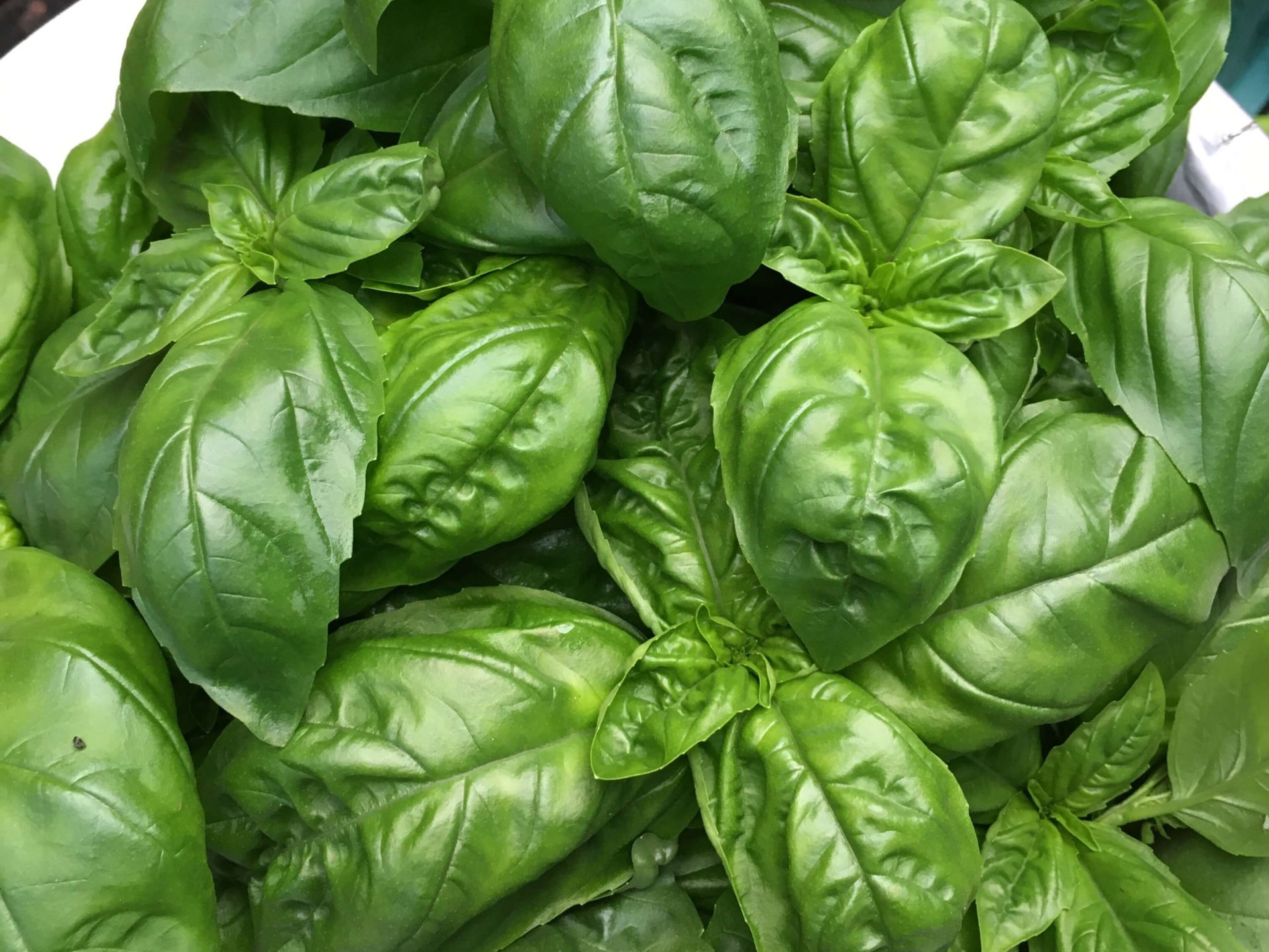
INSTRUCTIONS
Heat oven 350° F
Prepare the Dough and Crust:
- Wash and peel roots.
- Chop peeled and cleaned roots* into 1-inch cubes and add to a pot with water to cover. Add a good amount of salt (the water should taste salty) and some chopped fresh garlic (one clove is a good start) and boil the root until soft but not water-logged or overcooked. Then drain and allow the cooked root to cool completely before making the dough. You may do this step one to two days in advance and store the cooked root in the fridge, though in order to make the dough more pliable, let the root come to room temperature before you begin.
- Using a food processor, blend the precooked root in batches, with the cassava flour and salt. Start with less flour than the recipe calls for and then add in more flour in small increments as needed. The dough should be pliable, not wet and sticky, but not overly dry and crumbly.
- Drizzle about 1 ½ tablespoons of olive oil (or oil of choice) onto the baking sheet and brush to spread evenly.
- Press the dough onto the baking sheet using your hands. It’s important that the dough is spread evenly on the baking sheet so that it cooks uniformly and does not burn in some parts. This amount of dough on a large baking sheet, will give you a thin crust (which we like). If you prefer a thicker crust, you can increase the dough recipe or use a smaller baking pan.
- Using a fork, gently prick the top of the dough all over before baking.
- Bake the crust for approximately 30 mins, rotating the pan 2-3 times so that it cooks evenly. You are looking for a golden color on then bottom of crust and that the dough pulls away from the edges of the pan slightly as the moisture evaporates. The crust will be slightly firm to the touch, but not hard. We live in a very humid climate, so we tend to bake the crust as long as possible without burning it to remove as much moisture as possible, but it is important to check frequently to avoid burning.
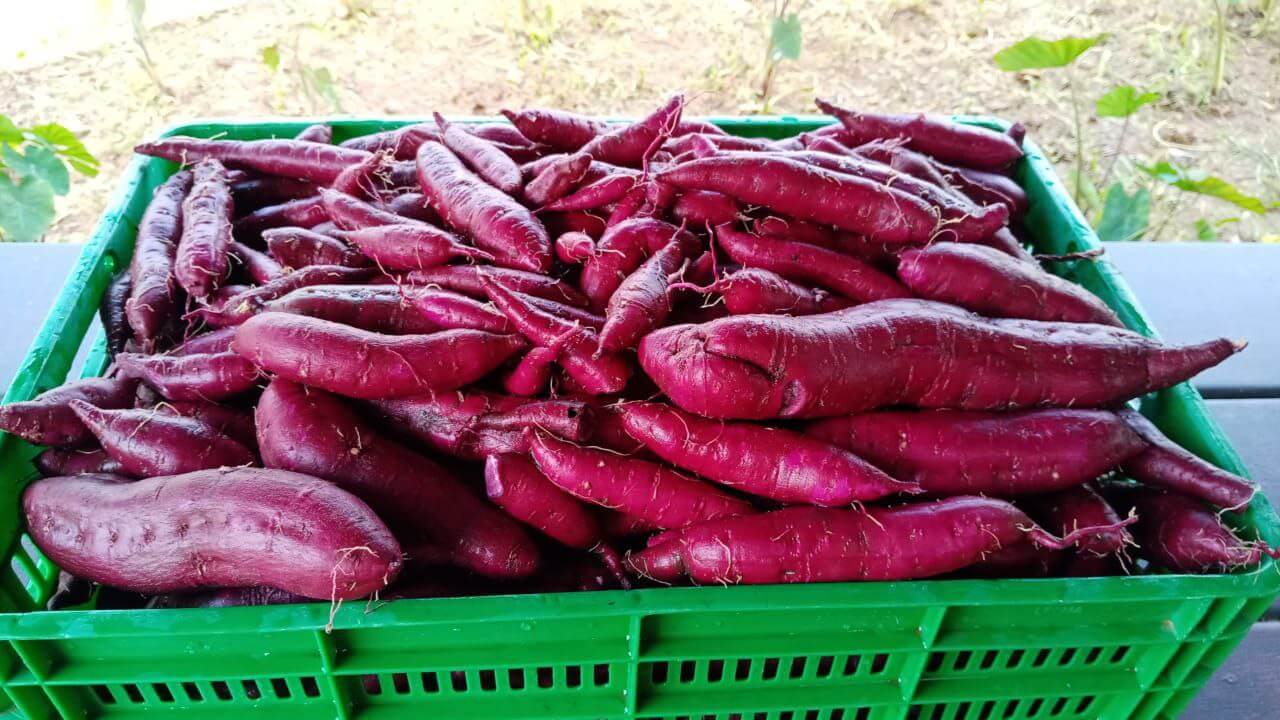
*One of our favorite roots to use is purple sweet potato (camote) grown in our own soils. Potatoes or camote don’t need peeling, but other roots such as yucca, nampi, malanaga – from the taro family – do require peeling. We actually cook way ahead of time, reserving some roots from a meal one day, freeze and then defrost when ready to make pizza! When doing this method it’s important to fully defrost the root overnight, then strain the next day to ensure there is no excess water.
Prepare the Tomato Sauce:
The following instructions are for making your own tomato sauce from scratch. Alternatively you can use high-quality (preferably organic) canned tomatoes. If using canned tomatoes, skip to #7.
- Fill a large pot with water, cover and put over the heat to boil. There should be a few inches between the water and the top of the pot so that when you add the tomatoes, the water stays in the pot.
- With a tomato corer or a paring knife, remove the core of the tomatoes.
- Make an “x” in the bottom of each tomato, piercing the skin so that it will easily peel off after boiling.
- When the water is boiling, add the tomatoes. Leave them in for 10 minutes.
- Meanwhile, fill a large bowl with cold water and ice.
- After 10 minutes, remove the tomatoes with tongs and immediately plunge them into the cold water (this helps the skins fall off with ease).
- Using tongs, discard the tomato skins and then remove the tomatoes from the cold water.
- Roughly chop the tomatoes, or pulse lightly in a food processor and then add to a mixing bowl.*
- Stir in the chopped basil, dried oregano, salt, and garlic and allow the flavors to marinate (can be up to a day in advance if stored in the fridge).
*We like to drain the liquid from the tomatoes, and squeeze out the juice (using hands), so that you are left with chunks of tomatoes separate from their juices (you can save the juice for a soup). Squeezing out the juice allows us to use lightly cooked tomatoes for the sauce while avoiding a runny or watery sauce which can make the crust soggy. You may also try your favorite tomato sauce, but you make sure it is not too wet.
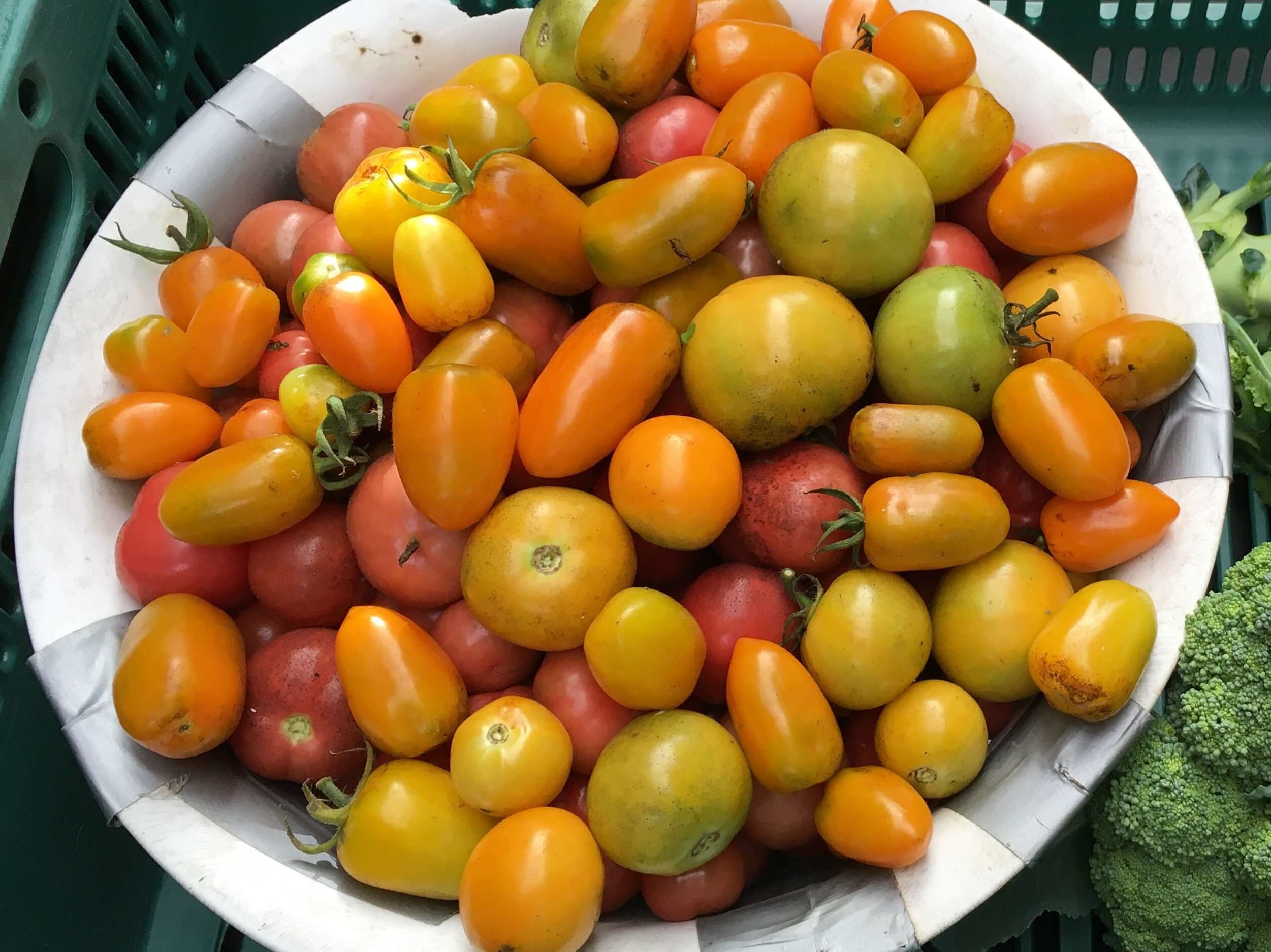
Prepare the Toppings:
- Grate the cheese and set aside.
- Chop or slice the veggies and pre-cook. Pre-cooking the vegetables allows us to gauge the readiness of the pizza based on the cheese and crust being perfectly golden versus waiting for the vegetables to be cooked. We lightly cook each veg separately in a pan with a tiny bit of water, covered so that the vegetables steam in their own moisture versus frying them in a lot of oil. We add a pinch of salt to each batch of veg while cooking. Note that some veggies, such as zucchini and bell pepper need very little cooking.
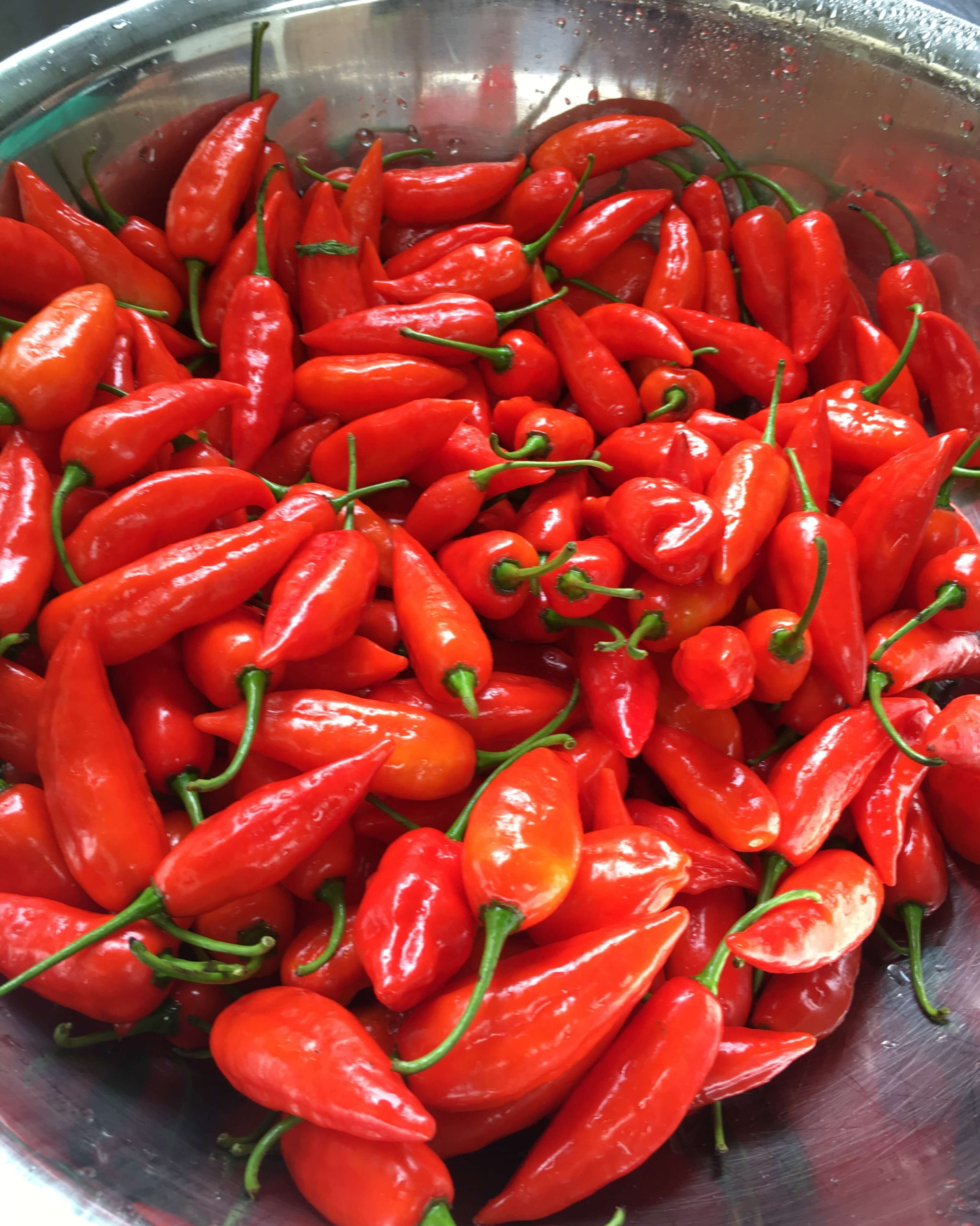
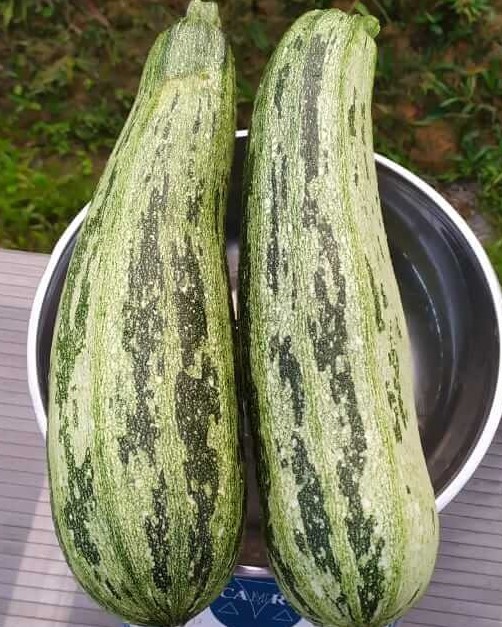
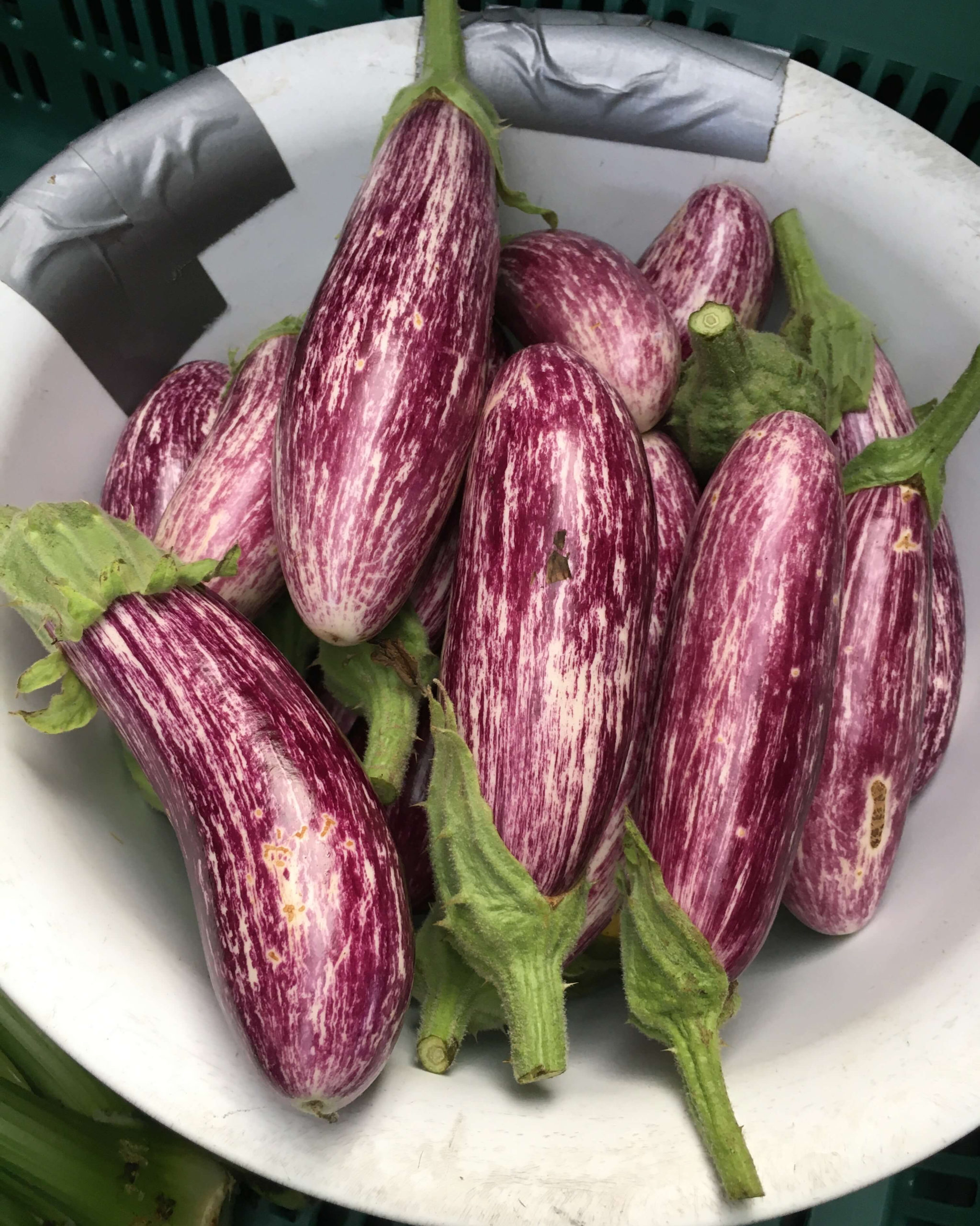
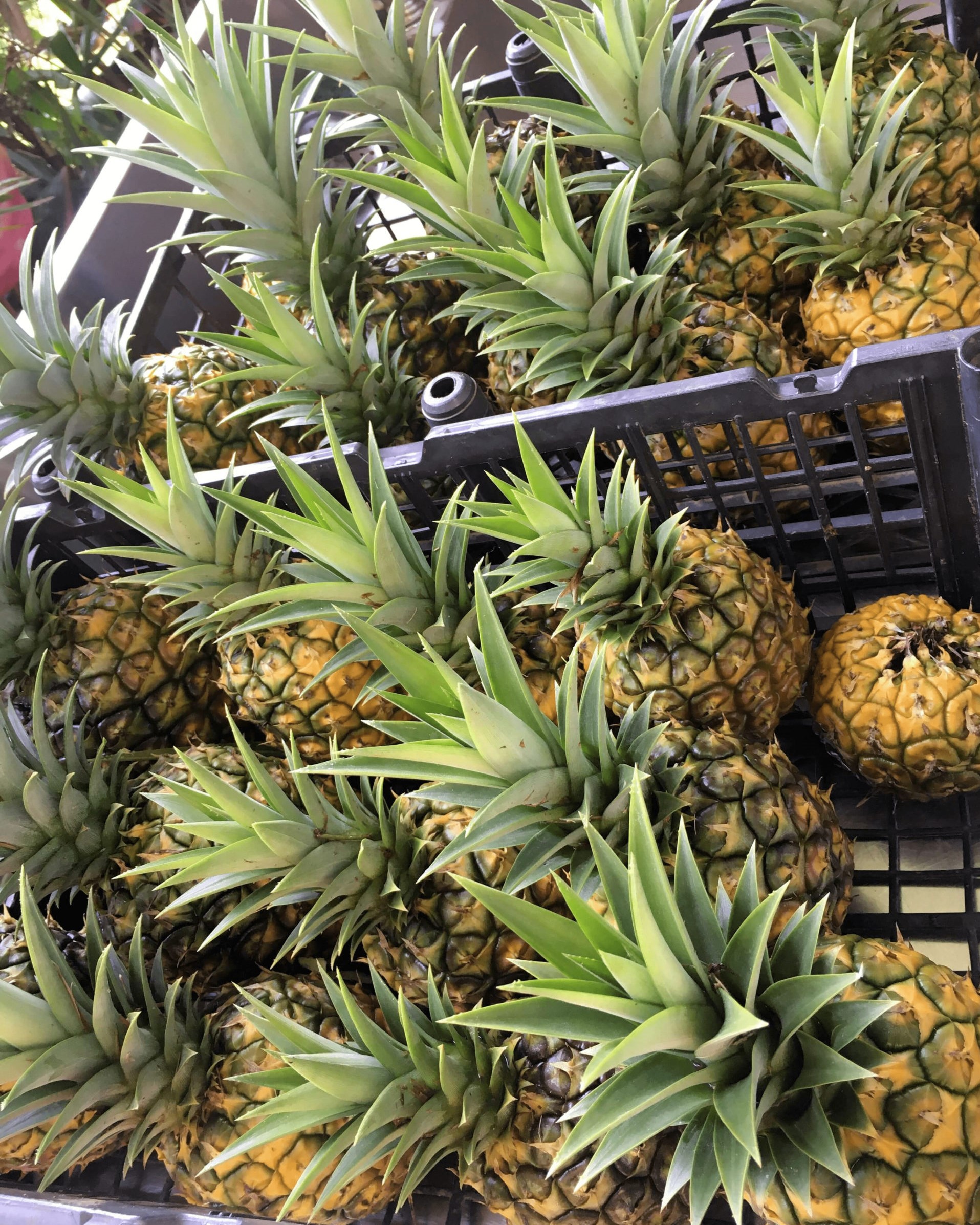
Prepare the Pizza:
- Turn on the oven to 400° F.
- Spread the sauce evenly on the dough.
- Spread an even layer of cheese over the sauce.
- Decorate with your chosen ingredients. Another note: Broccoli can burn easily, so we suggest adding that later, for just the last few minutes baking, or you can try adding the broccoli under the cheese.
- Before popping your pizza in the oven, you may wish to sprinkle a touch of salt, dried oregano, and a drizzle of olive oil over the top for one final layer of seasoning.
- Cook the pizza for approximately 7 – 15 minutes, until the cheese is bubbling and edges are starting to crisp (but not burn). In this step, it is important that you are monitoring the pizza so it does not get overdone. If you have a broiling option on your oven, you may also set that so that you focus the heat on the top of the pizza as the crust is already cooked below.
- Once the pizza cheese is bubbly and golden and ready to your own visual standards, remove from the oven, transfer to a large cutting board, let cool a few moments and then slice it up with a pizza cutter or kitchen scissors.
Tip: If the pizza feels a little undercooked in the very center, then after slicing, transfer the outside pieces to another tray or serving board, spread out the center pieces, and return them to the oven for another 5 minutes!
Who doesn’t LOVE pizza, especially when it is made with LOVE..and ingredients freshly harvested from our greenhouses, a gluten-free root-based crust from our food forests, and homemade cheese locally sourced from our neighbors (if you wish), or a cheeseless vegan version (if you prefer)! Biting into a slice of this farm to table pizza, and being able to locate every single ingredient to its source, is a rewarding factor that serves to multiply the deliciousness.
Being a predominantly gluten-free kitchen focused on healthy, homegrown, live food, our ashram kitchen, lovingly known as Ruchira (which means delicious, sattvic, bright, and beautiful) had only served pizza a handful of times over the last few years, as a special treat for celebrations. That was until Radha Ma, using her resourceful and creative prowess, turned some leftover boiled malanga (a robust root that grows here in abundance) into a root-based pizza crust, using only two other ingredients–yucca flour and salt. Not only did it make an incredible thin and crispy pizza crust, it added a real depth of flavor that stands up to your standard pizza crust. And so the experiments began, refining the recipe and process, trying different roots, and taste testing too!
Explore divine vegetarian cuisine in
Radha Ma’s Recipes for a New Sat Renaissance cookbook!
Creating pizza crusts with our plethora of roots is a creative solution to utilizing the abundance we have been gifted from the land–and to enjoying guilt-free, gluten-free pizza. We have yet to try a root that doesn’t work: malanga, ñampí (also known as taro), yucca and camote (sweet potato) have all been a success. This year, we have been growing 3 different colors of camote–purple, orange, and white. Each one has a unique flavor, and each one will work for the pizza base, however, the purple one won the right to this recipe due to its spectacular vibrancy! Team it up with farm-fresh toppings such as broccoli, red peppers, zucchini–or whatever you have on hand. Something we love to add is a drizzle of our vegan pesto, a great addition when the greenhouse is full of basil blooming! Just before serving, scatter fresh arugula on top and it will look and taste straight out of a gourmet pizza joint! It’s a simple, fuss-free recipe, and easier than making a traditional pizza dough, so if you haven’t already, we encourage you to try it.
As the ashram endeavors evermore toward a sustainable diet, we are increasingly inspired to create and share recipes that showcase the abundance of Arunachala, our mountain-top abode. There’s such a joy that comes from watching as the seeds are sown and the camotes are planted, and waiting patiently for its fruits, putting in the hard labor to make our own yucca flour, receiving cheese direct from one of our neighborhood workers whose family raises cows, creating a tomato sauce from the wild abundance of tomatoes that the greenhouse has produced, and then using what the land has to offer for the toppings, be it zucchini, broccoli, pineapples, or other more exoctic delights, such as heart of palm, or pejibayes (palm fruit). You will never want to order a pizza “to go” again!
In-joy!
Namaste,
Tara
Ruchira Supervisor
PS- Our ashram “prema”-culture team (prema means divine love!) has been creating joyful, beautiful, and information-filled harvest reports for many years, documenting our growth, challenges, and bountiful successes. And we now have the great joy of sharing them with our global community through our website blog page.
Please visit and share in the Infinite Beauty: Ashram Life Blog






This Post Has One Comment
Elazar
2 Dec 2022Namaste: Now THIS… is a pizz-a to come to an ashram for. THIS… and Amrita’s early morning chai. Well done! Blessings & Kind Regards to all Sat Yoga Lamplighters, Elazar